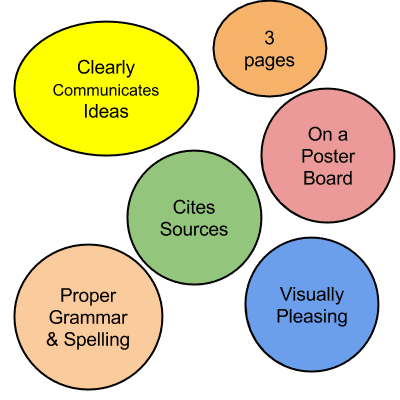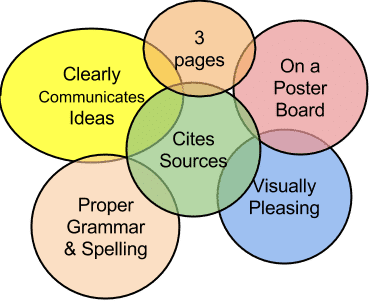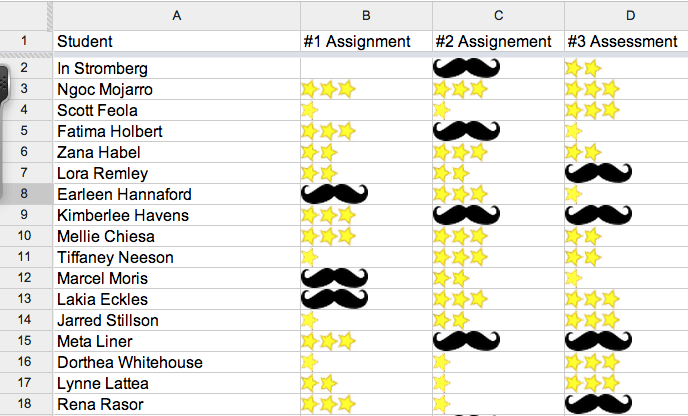Laser Sharp
What is the difference between an 87 and an 88 on a paper? Do we as educators have the ability to be so laser sharp with our assessment that there is a difference? How about between an 89 and a 90. Same gap, yet a completely different assessment. B+ vs an A. Do you grade with the same level of precision at the bottom of the stack of grading as you did at the top? It can be challenging to be consistent.
The Rubric
I am not sure at what point we started grading on a rubric where each category was worth a certain number of points, but this is a practice I dislike.
My first reason is because it takes the human element out of assessing students. It was not the teacher that gave the grade, it was the way it fell on the rubric.
My second reason is that I rarely think that the points the rubric adds up matches my holistic feeling on the paper. It is either too high or too low… usually too high. Not all of the elements of an assignment can be assessed mutually exclusive of the the other elements.

There are overlaps in how the elements work together. I have seen where the student clearly does not understand the learning objective but it was formatted correctly, cited sources, and had enough other elements so the student ended up with a decent grade. The student is satisfied and stops learning, but really the student needs to progress in improving their knowledge on the subject.

In short, the rubric is not able to be laser sharp in properly assessing students either.
Margin of Error
What if two teachers were to assess the same paper? Is it likely the score would come out exactly the same? What if the same teacher were to grade the same paper twice, perhaps a few days apart… I suspect the score might not be exactly the same.
This creates a margin of error on EACH assignment. We could say what is a point here and there on an assignment, but the cumulation of these margins of error could really make a difference in a students overall grade.
Throw in a Zero
If a student does not do an assignment this can cause a mathematical imbalance in the grade. The grade is not demonstrating what the student knows but reflects their compliance. I have heard of some schools trying to mitigate the damage a zero has on the grade by giving 50%. This does not accurately reflect what the student knows either. Click Here for a paper on the effect of giving a zero.
Not Numbers
I would prefer to see stars of mastery or anything other than numbers in the gradebook.
Using numbers makes it tempting to average scores. For example I have seen teachers use a 4 point rubric and then translate the rubric scores to a grades. Really, on this assignment you can earn an A, C, F or really low F?!
I have also seen on many many many occasions where a students grade is incorrectly calculated for a variety of reasons. One reason is not fully understanding the way the electronic gradebook calculates the grade. The scores end up being calculated in ways the teacher did not intend and the teacher oftentimes is not even aware it is happening.
The irony of using numbers to be fair, ends up not being fair.









3 thoughts on “Abusing Students with Math”
Ms. Keeler,
I understand your frustration and you present some interesting points. However, I feel I must address several of them.
First, I AM NO EXPERT in assessing students! I do however have 16 years of teaching experience and countless hours of PD on the topic. So I bring your attention to Rubrics first. If you are using a rubric to assess a student AND you get two different scores THEN there is an issue with the DESIGN of the rubric. Take a look at “How to Create and Use Rubrics” by Susan Brookhart (http://goo.gl/ddgF9a). You give an example using “Spelling and Grammar” as well as “Citing Sources”. Unless you are specifically assessing those skills they SHOULD NOT be on a rubric. They should be placed on a “check list” that students can follow to make sure they include what is asked of them.
Second, I understand your feelings about “numbers”. So I offer you a method of assessing that is becoming more and more popular: Standards Based Grading. If you follow this method of assessment then only activities that are directly related to the academic content standards should be included in a students grade. I suggest that you look at the following resources:
“Formative Assessment and Standards-Based Grading: Classroom Strategies That Work” Marzano (http://goo.gl/Yrf7Bt)
“Classroom Assessment & Grading That Work” Marzano (http://goo.gl/3jrMVG)
“Fair Isn’t Always Equal: Assessing & Grading in the Differentiated Classroom ” Wormeli (http://goo.gl/0hEIiw)
I look forward to any comments you and others may have.
Michael
I am definitely a fan of Wormelli. I have seen misunderstanding of math when applying rubrics. It is not universal. I also see issues with not understanding how the electronic gradebook calculates the math that results in students being given grades the teacher did not intend. I’m a fan of standards based gradebooks, but they are not universally implemented. An awareness that a lot of what we do is arbitrary and that even with a rubric our accuracy is limited. Allowing straight up math to determine the final evaluation of students may not match what the student deserves.
This is so true kiddos need the teachers perception into their effort not just a rubric checkoff. Also students do love stars instead if numbers or alphabeta for their grades even at high school.